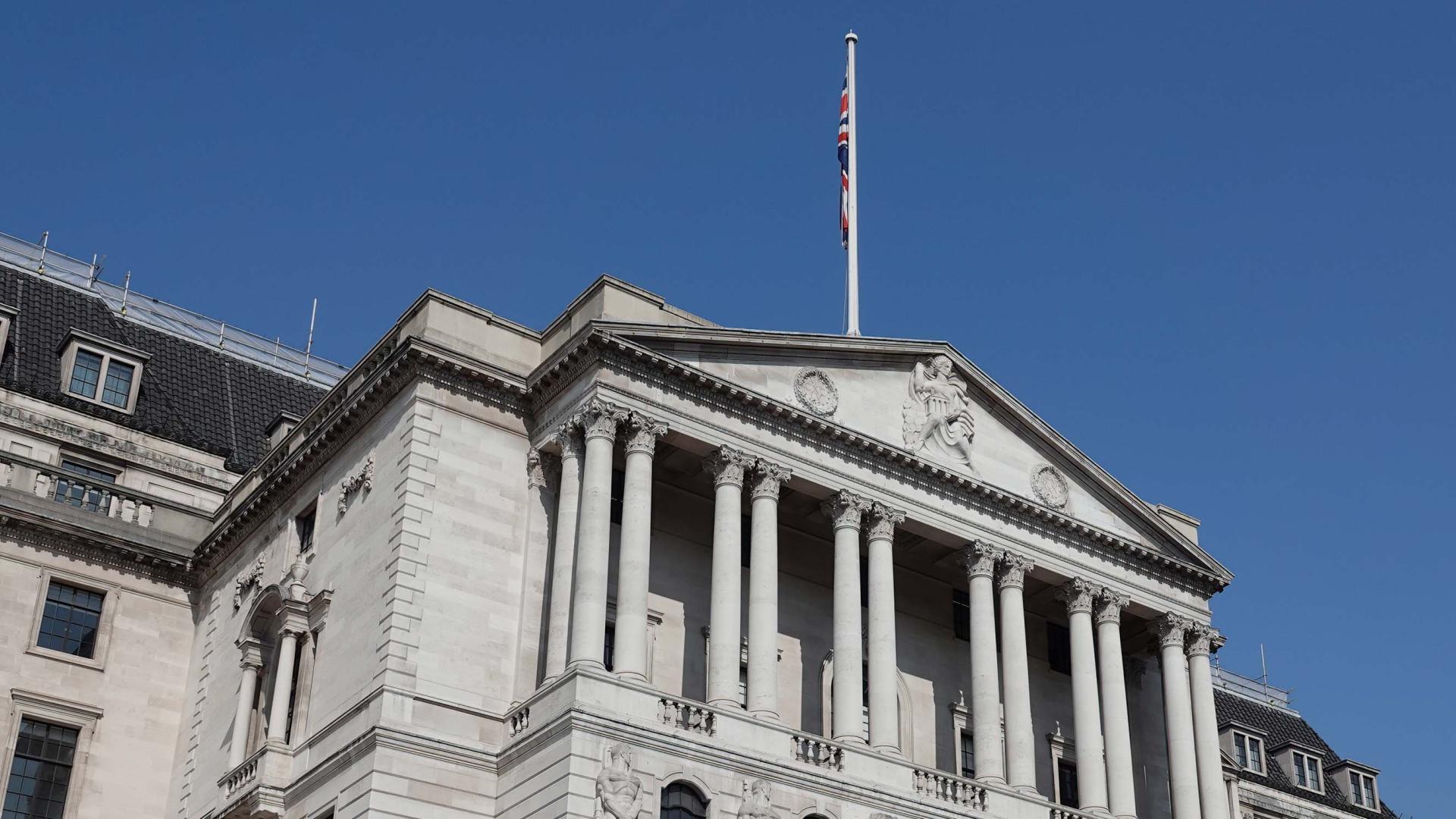The government has a fiscal target (the ‘fiscal mandate’) that relates to debt and a fiscal target (the ‘supplementary target’) that relates to borrowing. Of these, it is the debt rule that currently ‘bites’, or puts a binding constraint on policy. In place since 2022, it requires debt to be forecast to fall as a share of national income between four and five years out. On the most recent official forecasts published alongside the March Budget, this rule was met by the narrowest of margins: over the next four years, debt was forecast to rise from 91.7% of national income in 2024–25 to 93.2% in 2027–28 (the fourth year of the forecast), before falling back by 0.3% to 92.9% of national income in 2028–29, the fifth and final year of the forecast. This margin by which it is falling – 0.3% of GDP, or £9 billion, in the March Budget – is often, and sometimes unhelpfully, referred to as the Chancellor’s ‘headroom’. Forecasting the public finances several years into the future is a difficult task. Compared with the uncertainties involved, a margin of 0.3% is next to nothing: based on how much forecasts have moved in the past, it gives only a little better than a 50:50 chance of debt actually falling under unchanged policies in 2028–29 (54%).
The underlying idea to aim for a falling ratio of debt to national income in the medium term is a sensible one: most obviously, it can create a buffer to respond to unexpected adverse events, while allowing time to introduce necessary adjustments gradually rather than suddenly, which could be more costly both economically and socially. It certainly would not be sustainable for debt to be ever rising as a share of national income: there is a limit somewhere. But this specific fiscal target is more arbitrary and gameable than most.
At the March Budget, it required debt at the end of March 2029 to be lower than debt at the end of March 2028 (as a share of national income), but there is nothing special about those two points in time – or indeed about March 2030 and March 2029, which will become the relevant points at the next fiscal event (the first one in the fiscal year that began this April), when the rule ‘rolls forward’ a year. Adherence to this target is extremely sensitive to judgements about the future path for the economy – particularly the rate at which it is growing in five years’ time – and it provides clear incentives for governments to promise future tax rises or spending cuts that they may have no intention of delivering.
Of course, all feasible fiscal rules can be gamed. This government is by far from the first to find creative ways to meet the letter of its rules – past governments have strategically sold off public sector assets, or moved debt ‘off balance sheet’ via things such as the Private Finance Initiative, for example. New, inventive and damaging ways to game the rules will no doubt be dreamed up in the future. But this particular rule’s ‘gameability’ comes from the fact that stated plans for tax and spending that are not credible – such as the expiry of the ‘temporary’ 5p cut to the rates of fuel duties and subsequent increases in line with inflation – can mean the target is being met on paper, even if the Chancellor has no intention of actually implementing those stated plans.
Return of a current budget target?
Labour is proposing to change the second (‘supplementary’) fiscal target. In its current version, this rule limits the overall budget deficit – the difference between what the government spends and what it raises in taxes and other revenues – to 3% of national income in the fifth year of the forecast. Labour is proposing to target current budget balance instead.1 This would mean covering day-to-day spending with revenues but would allow borrowing to invest. In the past, current budget rules were in place (in varying forms) from 1997 to 2015 under both Labour and Conservative Chancellors. There are good reasons to target the current budget rather than overall borrowing, most obviously because we might think it is reasonable that the costs of financing investment spending are shared with future generations who, if the investments are done well, are likely to benefit from them.
Under the March 2024 forecast, the current budget would be in surplus by 0.4% of national income, or £14 billion, in 2028–29. In other words, ‘headroom’ (a somewhat unhelpful concept despite its prominent role in the debate) against a current budget target for the fifth year of the forecast, had it been in place in March, would have been £14 billion. This would have been slightly larger than the headroom against the debt rule at the time (£14 billion versus £9 billion) – and therefore the debt rule would have still been the rule that effectively constrains government policy.
However, it is notable that for as long as public investment is below 3% of national income (it is forecast to average 1.9% over the next four years), Labour’s current budget target would be more constraining than the Conservatives’ rule for overall borrowing to remain below 3% of national income. This largely reflects the looseness of the Conservatives’ borrowing rule: on virtually every occasion in the 43 years since 1980 (outside of the Global Financial Crisis and the COVID-19 pandemic), the Chancellor at the time could have increased planned borrowing without breaching this target.
Labour’s proposals on investment spending
So how does Labour’s ‘Green Prosperity Plan’ fit in? After paring back the plan substantially, Labour is now proposing to invest an additional £23.7 billion over five years to support the transition to net zero. Note that even this would leave public investment spending on a falling path – just not quite as sharply as currently planned. Furthermore, the proposed additional spending would amount to less than half of the additional investment spending the Office for Budget Responsibility (OBR) thought would be required over the same period when it outlined an ‘early action scenario’ consistent with the recommendations of the Climate Change Committee in 2021.
Unlike its other commitments – which Labour intends to be funded by tax rises – this investment spending is to be funded by additional borrowing. As investment spending, it would not score against the current budget, and hence would make (next to) no difference to the likelihood of meeting Labour’s current budget rule.2
But as we have seen, Labour has committed to the same debt rule as the Conservatives, and that rule makes no distinction between investment and day-to-day spending. It is also the rule that binds.
Whatever the intrinsic merits of borrowing to invest for these or other worthy purposes, borrowing for Labour’s Green Prosperity Plan will make the debt rule harder to meet.
First, we consider whether Labour’s investment plans would have been consistent with the debt rule, had they been announced in the March 2024 Budget, for the forecast period running to 2028–29. Figure 1 shows the forecast for debt from the March Budget, alongside an illustrative trajectory that includes a path for investment consistent with Labour’s proposal to spend £23.7 billion over the parliament.3 In constructing this, we have adjusted for an increase in economic activity and resulting boost to tax revenues, as well as the debt interest costs incurred on the extra borrowing.
Under this illustrative scenario, debt would still be falling in 2028–29, but to an even smaller degree. Different assumptions about the profile of spending and its longer-term benefits for growth give slightly different estimates, but our analysis suggests that had Labour’s investment plans been announced in the March Budget, this would have reduced ‘headroom’ against the debt target by some £4–7 billion (relative to a starting £9 billion). In other words, under the OBR’s March 2024 forecasts, which run to 2028–29, our analysis suggests that Labour could do this extra borrowing without breaching its debt target – just.
However, at the post-election fiscal event, the forecast period will roll forwards by a year, to 2029–30. The debt target will roll forwards also, to require debt to fall between March 2029 and March 2030. It is not possible to say whether, come the autumn, Labour’s investment plans will still be consistent with a promise to have debt falling in the fifth year of the forecast: the margins are too fine, and there are simply too many complexities and too many moving parts. It could be that debt is forecast to fall more decisively (thereby increasing measured ‘headroom’) – especially if the tight public service spending plans in the current forecast are extended for another year. But there are a lot of ifs in there, and it is entirely possible that the OBR will downgrade its forecast to bring it more in line with those of other forecasters such as the Bank of England.
Other external factors, such as the forecast profile of losses from the Treasury’s indemnity underpinning the Quantitative Easing programme, could also be unhelpful to the post-election Chancellor. The fact that the impact of rolling the target forward a year is so difficult to predict, and so sensitive to technical assumptions, illustrates its key design flaw.
In sum, on the basis of the OBR’s March forecasts, it looks as though Labour’s new, pared-back investment plans are just about consistent with a promise to get debt falling. It remains to be seen whether that will still be the case come the autumn.
A difficult fiscal situation – with or without additional investment
Taking a step back, the difference between the two lines in Figure 1 is minuscule relative to the other pressures and uncertainties involved. In either case, debt is virtually flat. Small and plausible adjustments to the policy settings, such as a permanent freeze in fuel duties (a £4.4 billion reduction in ‘headroom’ in 2028–29) or undoing some of the cuts to ‘unprotected’ public services implied by the current spending envelope, could leave the debt forecast on a rising path. And that is before considering the many sources of uncertainty about the environment policymakers find themselves in, from growth to interest rates (the change in market expectations since the Budget alone would raise spending by about £1 billion in 2028–29) to the projected profile of payments from the Treasury to the Bank of England as the Quantitative Easing programme is wound up.
The debt rule is hugely sensitive to small and economically unimportant changes to assumptions. This is its key design flaw and also makes it unnecessarily difficult to project ‘headroom’ at the next fiscal event. However, the reason behind wanting to get debt on a falling path relative to national income is to build resilience and be able to respond to future adverse events. Fine-tuning stated policy at each fiscal event to have debt forecast to be exactly flat in five years’ time does not achieve that.










